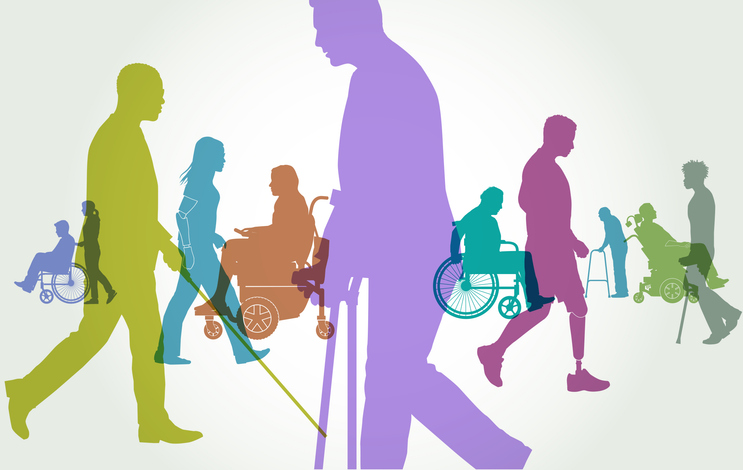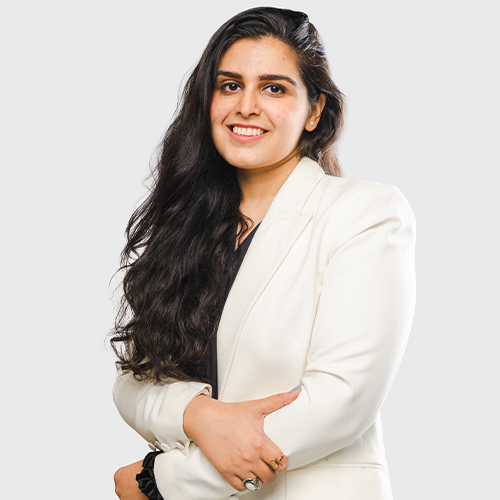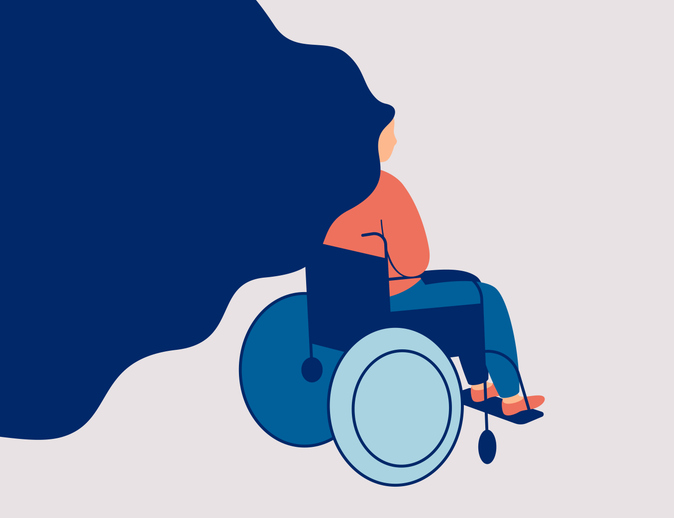
Is your Disability Percentage Enough?
For persons with disabilities, discrimination, denials and deprivations have historically been the norm. Societal stigma, misconceptions and prejudices have resulted in a sustained denial of access to resources and opportunities. Accommodations ensuring equity of access for persons with disabilities, at par with their non-disabled counterparts, are few and far between. This impacts their autonomy as well as their financial and social life. The 2011 Census data revealed that out of the 2.68 crore persons with disabilities in India, only 1.46 crore were literate, and a mere 8.53% of these 1.46 crore held a graduate degree or higher qualification. The United Nations Convention on the Rights of Persons with Disabilities, 2008 (‘UN CRPD’), to which India is a signatory, mandates state parties to provide an inclusive education system – at all levels to ensure persons with disabilities participate effectively in a free society. However, in the absence of adequate opportunities for education of persons with disabilities in India, a large section of them get en-masse pushed towards vocations and poorly remunerated jobs that are considered “appropriate” for persons with disabilities. This ultimately goes on to perpetuate a vicious cycle of exclusion.
The Constitution of India mandates the State to promote the educational and economic interests of ‘the weaker sections’ (Article 46) and to secure the rights to work and education for persons with disabilities (Article 41). The Rights of Persons with Disabilities Act, 2016 (RPWD Act), the primary domestic legislation pertaining to the rights of persons with disabilities, provides for affirmative action through reservation in higher education institutions (Section 32). However, despite these legal obligations, the on-ground reality remains distressing.
An interesting facet of the reservation provision is that the guarantee of reservation in higher education institutions is only available to persons with benchmark disabilities. According to Section 2(r) of the RPWD Act, 2016, a person with a benchmark disability is defined as a person having “not less than forty per cent of a specified disability.” This means that individuals with disabilities must undergo an assessment (by government medical authorities), which quantifies their disability in percentage terms. Only those with a disability assessed at 40% or higher qualify for reservations.
This percentage-based assessment has faced criticism for being rooted in the medical model of disability, which posits that if medical intervention cannot ‘cure’ a person’s impairment, society can justifiably limit their autonomy due to their ‘limited participation capabilities.’ This categorisation of persons with disabilities and persons with benchmark disabilities also undermines the fundamental objectives of both the RPWD Act, 2016 and the UN CRPD. These frameworks aim to promote the social and human rights model of disability, which recognises disability as a complex interplay of the experiences of persons with a health condition in their interaction with the barriers in their environment and that the manner in which a person experiences a disability is a function of time. Unsurprisingly, thus, this method of assessment has garnered criticism for being narrow and overlooking the fact that the experience and extent of disability are different for different individuals.
In its Concluding Observations on the initial report of India, the Committee on the Rights of Persons with Disabilities also highlighted the prevalence of the medical model of disability within Indian legislation, public policies, and societal attitudes. The Committee noted how the multiple assessments and the requirement for different assessments to access services lead to the denial of reasonable accommodation, amounting to discrimination among persons with disabilities based on the disability percentage. This observation underscores how disability functions in India – as a political and social construct, similar to caste and gender, whereby biological factors foster discriminatory practices and determine the societal narrative.
The Supreme Court, in the case of Ravindra Kumar Dhariwal v. Union of India, 2021 SCC OnLine SC 1293, observed that “disability is a social construct.” Noting that disability is dependent on the interplay between a person’s condition and factors such as the barriers- social, economic, and historical that they face, the Court remarked that “the one–size–fits–all approach can never be used to identify the disability of a person. Disability is not universal but is an individualistic conception based on the impairment that a person has along with the barriers that they face.”
Furthermore, the percentage-based assessment creates an ironic disparity whereby persons with 40% disability or more become entitled to reservations, whereas persons with disabilities but not benchmark disability are excluded from the purview of these benefits. To explain, a person with a disability who is assessed at 39%, stands disqualified from availing reservation for admission to a college but, their counterpart with a 40% disability becomes entitled to it. This fallacious distinction results in a paradoxical situation whereby persons with disabilities, but not benchmark disabilities, remain disentitled from any welfare measures and schemes other than broadly phrased vague and generic guarantees of equality and non-discrimination.
In the recent case of Bambhaniya Sagar Vasharambhai v Union of India, W.P. (C) No. 856/2023, the Apex Court flagged this distinction between persons with disabilities and persons with benchmark disabilities, whereby “the extent of disability disentitles them to be treated as persons with disability.” The Court observed that,
“13. In the opinion of this Court, in cases even of specified disabilities, in all cases, the standard of 40% may result in a “one-size-fits-all” norm, which will exclude eligible candidates. The Union, therefore, shall consider the steps to mitigate such anomalies because a lower extent of disabilities bar benefits and at the same time render them functional, whereas a higher extent of disability would entitle benefits but also result in denying them the benefit of reservation. The National Commission and the Central Government are directed to consider the problem and work out suitable solutions to enable effective participation.”
This failure to recognise the holistic nature of disability consequently perpetuates systemic cycles of exclusion and disadvantage. The absence of disability-friendly educational institutions exacerbates this situation. Even the so-called exceptions, prominent central universities like Delhi University and Jawaharlal Nehru University, which claim to fare better in accessibility than their counterparts, are only partially accessible at best. Given the tremendous competition for securing a seat in these universities, only a handful of persons with disabilities manage to secure admission to these universities, while many others are pushed out of the higher education system due to the inaccessibility of institutions.
While some private universities may offer better accessibility for students with disabilities, their exorbitant fee structures often make them inaccessible to the majority of the population. The high tuition fees and associated costs place these institutions out of reach for many families, particularly those from lower socio-economic backgrounds. This financial barrier is especially challenging for students with disabilities, who may already face additional expenses related to their specific needs, such as medical care, assistive devices, and transportation. Consequently, despite the physical accessibility these private universities might provide, the financial inaccessibility further limits educational opportunities for a significant portion of students with disabilities.
Another concerning trend is the persistent vacancy of seats reserved for persons with disabilities, particularly in professional and STEM courses at premier institutions like the IITs. Since reservation for persons with disabilities is horizontal, i.e., the seats reserved for persons with disabilities are a percentage of the total seats in the respective vertical categories. Resultantly, as per the extant policy, the seats reserved for persons with disabilities that are left vacant are then converted to their respective non-disabled vertical category seats. To illustrate, in the event that a seat reserved for students with benchmark disabilities in the ‘Scheduled Caste’ category remains unfilled, that seat will then be open to all ‘Scheduled Caste’ category students without disabilities, effectively excluding ‘Scheduled Caste’ category students with disabilities who do not meet the benchmark criteria of 40% disability from the benefit of reservation. Consequently, a student with a disability, assessed as 39%, would then be competing against a student without any disability for a seat initially reserved for students with disabilities above 40%. This perpetuates the exclusion of students with disabilities by putting a premium of ableism on higher education.
The consequent exclusion of students with disabilities also represents a missed opportunity for fostering greater inclusivity by admitting students with disabilities beyond those classified as having benchmark disability. Each year, this opportunity goes unrealised despite the potential benefits that fostering greater diversity and accessibility can have on society as a whole, as affirmed by the International Labour Organisation.
When more students with disabilities are included in the educational system, barriers for everyone are reduced. A larger and more diverse student body necessitates a broader range of accessibility and inclusion measures within academic institutions. As the population of students with disabilities grows, educational institutions would necessarily have to adapt and expand their efforts to cater to the needs of a more significant percentage of the student body. This, in essence, would result in a more inclusive, diverse, and accommodating learning environment, besides having economic benefits.
By moving away from narrow definitions and rigid classification systems, we can create policies and practices that foster greater inclusivity and equity in higher education and beyond. It is thus imperative for policymakers and educational institutions to prioritise inclusivity and take proactive measures to ensure that all students have equal opportunities and thrive as equal members of society.



